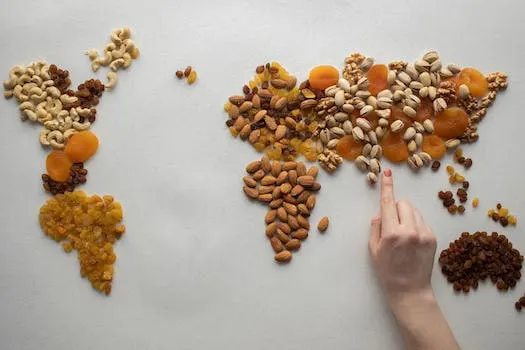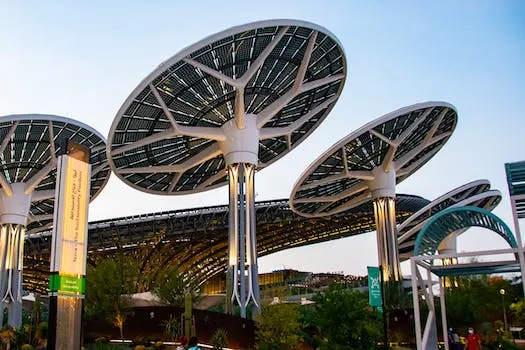
Going Nuts: How the Increase in Nut Consumption is Impacting the Environment
As the demand for healthy snacks increases, so does the consumption of nuts. While nuts are a nutritious and tasty snack, they come with an environmental price tag. From groundnuts to legumes, tree nuts to peanuts, nut production has a significant impact on our environment. A recent study found that a diet heavy in nuts can have negative consequences for our planet. Not only are some types of nuts more water-intensive than others, but they can also trigger allergies due to their close relationship with other foods like peanuts and tree nuts. Furthermore, two big stories about serious allergic reactions allegedly due to people consuming nuts on airplanes had recently made headlines around the world.
Nuts are becoming increasingly popular as a healthy snack option due to their high nutritional value and delicious taste; however, this comes at an environmental cost. The production of different types of nuts requires large amounts of water and energy which can have detrimental effects on our planet if not managed properly. Groundnuts such as peanuts require more water than other types of nut production while legumes need less water but still require significant resources for cultivation and harvesting processes. Tree-nuts such as almonds, Brazil-nuts walnuts hazelnuts macadamia-nuts etc., also require large amounts of resources for growth and harvesting processes which can lead to soil erosion or depletion over time if not managed properly .
In addition to their environmental impacts from production processes , there is also evidence that suggests that consuming too many tree-nut products may increase one’s risk for developing food allergies . This is because certain proteins found in tree-nut products are similar enough that those who suffer from peanut allergies may be at risk when consuming these other nut varieties . Furthermore , two major news stories about serious allergic reactions allegedly caused by people eating peanuts or tree -n uts on airplanes had recently made headlines around the world , highlighting how important it is to be aware when consuming these products .
It is clear that while nut consumption has its benefits , it must be done responsibly in order to minimize its environmental impacts . Understanding how different types of nut production affects our environment will help us make better decisions when choosing what type of nut to consume. By being mindful about where we source our food from , we can ensure that we enjoy all the benefits associated with eating healthy snacks without compromising sustainability efforts
The Impact of Nut Production on the Environment
Nuts are an increasingly popular part of many diets, but their production has a large environmental footprint. Nuts require a lot of water and fertilizer to grow, and since they’re often grown in large orchards, they can cause soil erosion and air pollution. Additionally, nuts are often shipped long distances which adds to their environmental impact. The production of nuts also has an impact on wildlife as the loss of natural habitats for animals such as birds and small mammals is common due to the presence of large orchards. Furthermore, many types of nuts are grown with the use of pesticides which can be toxic to wildlife.
Given these facts about nut production's environmental impacts, it is important to consider how eco-friendly different types of nuts really are when making food choices that have a positive effect on the environment. To understand this better we must look at several factors including light, temperature, water usage, humidity levels and nutrition requirements for plant growth as well as greenhouse gas emissions associated with food production in general.
When it comes to light requirements for nut growth most varieties need full sun exposure while some may tolerate partial shade depending on the species being grown. Temperature also plays an important role in nut growth; most varieties prefer warm climates but some may tolerate cooler temperatures depending on species type again. Water usage varies greatly between different types; some require more than others while some may even be drought tolerant depending on species type once more! Humidity levels should also be taken into consideration when growing certain varieties; too much humidity can lead to fungal diseases while too little can stunt plant growth so careful monitoring is key here! Finally nutrition requirements vary from one variety to another so understanding what each needs is essential for successful cultivation!
In terms of greenhouse gas emissions associated with food production overall it accounts for over a quarter (26%) globally so making environmentally friendly choices when selecting foods is very important if we want our planet’s future generations to benefit from its resources! Incorporating more nuts into your diet could help reduce this figure significantly given that they contain high amounts protein and other essential nutrients without requiring much land or energy input compared with other animal-based proteins like beef or pork which require far more resources per gram produced than plant-based proteins like those found in nuts do!
Overall incorporating more sustainable nut varieties into your diet could make a big difference both environmentally speaking and health wise given their high nutrient content without requiring much land or energy input compared with other animal-based proteins like beef or pork which require far more resources per gram produced than plant-based proteins like those found in nuts do! So next time you're looking for something nutritious yet eco-friendly why not give them a try?
The Impact of Nut Consumption on the Environment
Nuts are a healthy and tasty snack, but they come with an environmental cost. In addition to the impacts of nut production, the consumption of nuts can also have an environmental impact. For example, when nuts are purchased in plastic packaging, this packaging can end up in landfills or in the ocean. Our expert explains the pros and cons of eating nuts as a healthy snack, highlighting the benefits of healthy fats found in almonds, pistachios, pecans and hazelnuts.
The carbon footprint associated with nut consumption is also significant due to their long-distance shipping and processing with energy and water. To reduce this impact on our environment it is important to consider how we package our snacks when purchasing them. Flexible retail packaging for oven-roasted almonds has less environmental impact than bulky plastic containers or boxes that take up more space during transport.
Including fresh fruit or nuts as part of one's diet can provide extra nutrients while helping maintain adequate nutrition if one has a poor appetite but cannot eat large meals due to health issues or other reasons. Research has shown that making nuts a regular part of one's diet was associated with less long-term weight gain and a lower risk of obesity compared to those who did not include them regularly in their diets.
However, disposable plastic packaging used for many snacks - including nuts - also impacts the health of our environment by taking hundreds of years to decompose once it ends up in landfills after its useful life is over. Therefore it is important for us all to be mindful about how we package our snacks when purchasing them so that we can reduce their environmental impact while still enjoying these nutritious treats!
How to Reduce Your Environmental Impact When Eating Nuts
If you want to reduce your environmental impact while still enjoying nuts, there are a few steps you can take. First, look for locally grown and processed nuts. This will help reduce the environmental impact of shipping and packaging. Additionally, try to find nuts that come in recyclable or reusable packaging. You can also reduce the amount of nuts you eat by opting for smaller portions or looking for nut-free snacks as an alternative. Plant-based sources of protein and healthy fats such as beans and seeds are also great options if you’re looking to cut down on your nut consumption. Eating local foods is another great way to minimize your environmental footprint when it comes to food production; buying locally grown produce reduces transportation costs associated with fuel, refrigeration, etc., so it’s a win-win situation!
When it comes to sustainable nut consumption, certain types of nuts are better than others when it comes to their environmental impact. Almonds are often touted as a healthy snack because they provide essential nutrients like protein and healthy fats while helping maintain a healthy weight; however, almonds require large amounts of water during production which can have an adverse effect on the environment if not managed properly. If you’re looking for more eco-friendly alternatives when shopping for nuts, consider ditching single-use plastic packaging in favor of more sustainable options like paper bags or reusable containers that can be used over again instead of being thrown away after one use. Additionally, look into organic farming practices which use fewer chemicals than traditional farming methods; this helps protect soil health while reducing water usage during production which is beneficial both environmentally and economically!
Conclusion
In conclusion, nuts are a healthy and tasty snack, but they come with a large environmental footprint. From production to consumption, nuts have an impact on the environment. A diet heavy in nuts can have a negative impact on the environment due to their carbon footprint and water usage. To reduce your environmental impact when eating nuts, look for locally grown and processed nuts, buy them in recyclable or reusable packaging, and reduce the amount of nuts you eat. Additionally, try plant-based sources of protein and healthy fats such as beans and seeds which have lower carbon footprints than animal-based proteins like meat, cheese or eggs. By making these small changes we can help protect our planet while still enjoying our favorite snacks!










